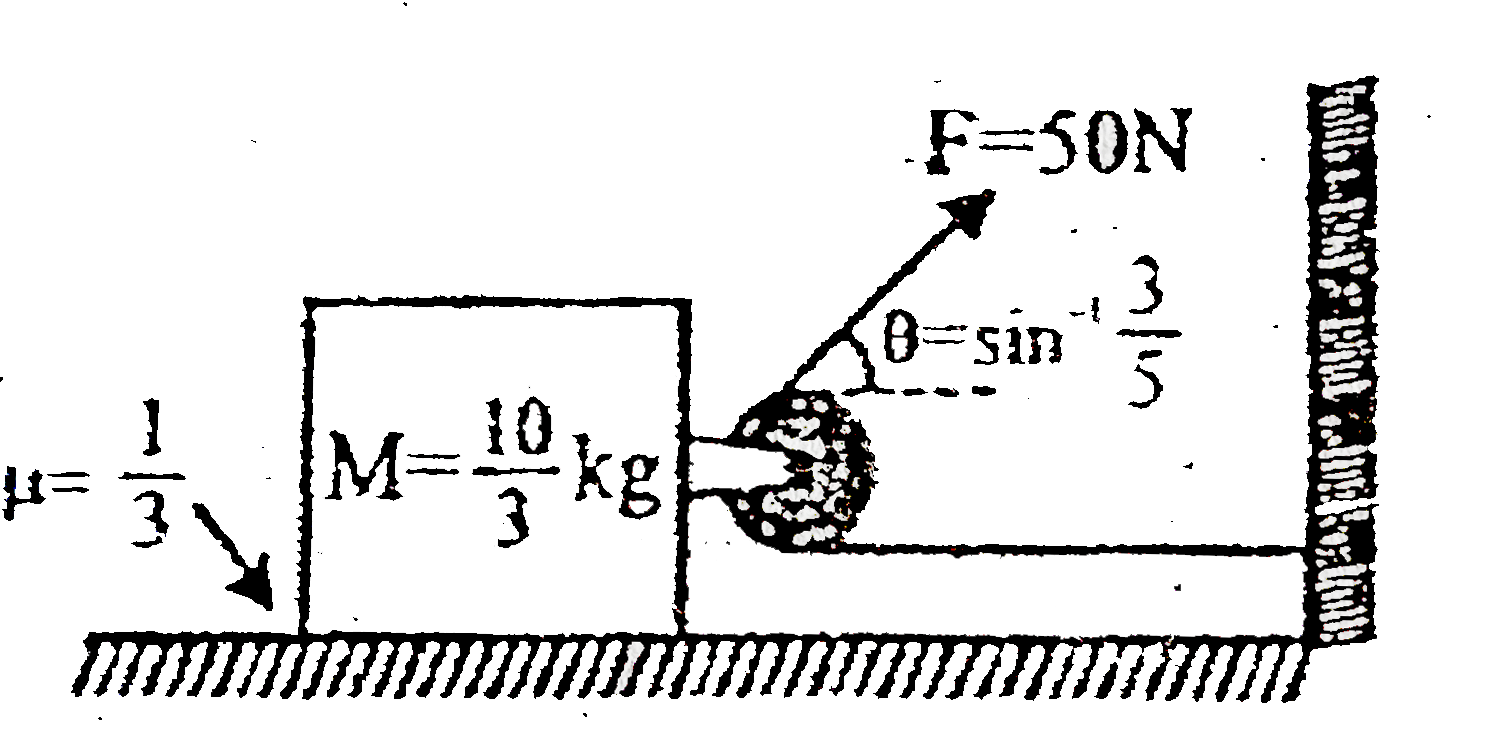The maximum acceleration that can be produced by the engine of a vehicle is 5ms−2 and the maximum retardation is brake can produce is 10ms−2. Then the minimum time during which it can cover a distance of 60 m is
6 s
5 s
36 s
24 s.
The correct Answer is:a
To solve the problem, we need to determine the minimum time required for a vehicle to cover a distance of 60 meters given its maximum acceleration and maximum retardation.
1. Define the Variables:
- Maximum acceleration, a1=5m/s2
- Maximum retardation, a2=−10m/s2 (negative because it is deceleration)
- Total distance, S=60m
2. Distance During Acceleration:
- Let s1 be the distance covered during the acceleration phase.
- Using the kinematic equation:
V2=U2+2a1s1
where U=0 (initial velocity during acceleration), we get:
V2=2⋅5⋅s1⟹V2=10s1
3. Distance During Retardation:
- Let s2 be the distance covered during the retardation phase.
- Using the kinematic equation:
V2=U2+2a2s2
where U=V (initial velocity during retardation) and V=0 at the end of retardation, we have:
0=V2−2⋅10⋅s2⟹V2=20s2
4. Total Distance:
- The total distance covered is the sum of the distances during acceleration and retardation:
S=s1+s2=60
- Substitute s1 and s2 in terms of V:
s1=V210,s2=V220
- Therefore, we can write:
V210+V220=60
5. Combine the Terms:
- Find a common denominator (which is 20):
2V220+V220=60⟹3V220=60
6. Solve for V2:
- Multiply both sides by 20:
3V2=1200⟹V2=400⟹V=20m/s
7. Calculate Time During Acceleration:
- Using the equation V=U+a1t1:
20=0+5t1⟹t1=205=4s
8. Calculate Time During Retardation:
- Using the equation V=U+a2t2:
0=20−10t2⟹10t2=20⟹t2=2s
9. Total Time:
- The total time T to cover the distance of 60 m is:
T=t1+t2=4+2=6s
Final Answer:
The minimum time during which the vehicle can cover a distance of 60 m is 6 seconds.
- Maximum acceleration, a1=5m/s2
- Maximum retardation, a2=−10m/s2 (negative because it is deceleration)
- Total distance, S=60m
- Let s1 be the distance covered during the acceleration phase.
- Using the kinematic equation:
V2=U2+2a1s1
where U=0 (initial velocity during acceleration), we get:
V2=2⋅5⋅s1⟹V2=10s1
- Let s2 be the distance covered during the retardation phase.
- Using the kinematic equation:
V2=U2+2a2s2
where U=V (initial velocity during retardation) and V=0 at the end of retardation, we have:
0=V2−2⋅10⋅s2⟹V2=20s2
- The total distance covered is the sum of the distances during acceleration and retardation:
S=s1+s2=60
- Substitute s1 and s2 in terms of V:
s1=V210,s2=V220
- Therefore, we can write:
V210+V220=60
- Find a common denominator (which is 20):
2V220+V220=60⟹3V220=60
- Multiply both sides by 20:
3V2=1200⟹V2=400⟹V=20m/s
- Using the equation V=U+a1t1:
20=0+5t1⟹t1=205=4s
- Using the equation V=U+a2t2:
0=20−10t2⟹10t2=20⟹t2=2s
- The total time T to cover the distance of 60 m is:
T=t1+t2=4+2=6s
The minimum time during which the vehicle can cover a distance of 60 m is 6 seconds.
Topper's Solved these Questions
- COMPETITION CARE UNITBOOK - ICSECHAPTER - COMPETITION CARE UNITEXERCISE - Dynamics (PROJECTILE MOTION)
31 Videos
- COMPETITION CARE UNITBOOK - ICSECHAPTER - COMPETITION CARE UNITEXERCISE - Dynamics ( Laws of motion )
36 Videos
- COMPETITION CARE UNITBOOK - ICSECHAPTER - COMPETITION CARE UNITEXERCISE - VECTORS AND SCALARS [Selected from Previoius Years Engg. & Med. & IIT Exam Qns]
35 Videos
- CIRCULAR MOTION BOOK - ICSECHAPTER - CIRCULAR MOTION EXERCISE - MODULE 2 (FROM ROTATIONAL KINETIC ENERGY , WORK ,POWER)
24 Videos
- DIMENSIONSBOOK - ICSECHAPTER - DIMENSIONSEXERCISE - SELECTED PROBLEMS (FROM CONVERSIONS OF ONE SYSTEMS OF UNITS INTO ANOTHER)
9 Videos
Similar Questions
A scooter can produce a maximum acceleration of 5ms−2.Its brakes can produce a maximum retardation of 10ms−2.The minimum time in which it can cover a distance of 1.5 km is?
View SolutionA car is travelling on a straight road. The maximum velocity the car Can attain is 24ms−1. The maximum acceleration and deceleration it can attain are 1ms−2 and 4ms−2 respectively. The shortest time the car takes from rest to rest in a distance of 200 m is,
View SolutionA body projected with velocity 30 ms−1 reaches its maximum height in 1.5 s. Its range is (g=10ms−2)
View SolutionThe interplaner distance in a crystal is 2.8×10–8 m. The value of maximum wavelength which can be diffracted : -
View SolutionA car of mass m has an engine which can deliver power P. The minimum time in which car can be accelerated from rest to a speed v is :-
View SolutionA car of mass m has an engine which can deliver power P. The minimum time in which car can be accelerated from rest to a speed v is :-
View SolutionIn a given figure the acceleration of M is (g=10ms−2)

View SolutionThe maximum stress that can be applied to the material of a wire used to suspend an elevator is 1.3×108Nm−2. If the mass of the elevator is 900 kg and it moves up with an acceleration of 2.2ms−2 , what is the minimum diameter of the wire?
View SolutionA particle executing SHM has a maximum speed of 0.5ms−1 and maximum acceleration of 1.0ms−2. The angular frequency of oscillation is
View SolutionThe friction of the air causes a vertical retardation equal to 10% of the acceleration due to gravity (takeg=10ms−2) The maximum height will be decreased by:
View Solution
